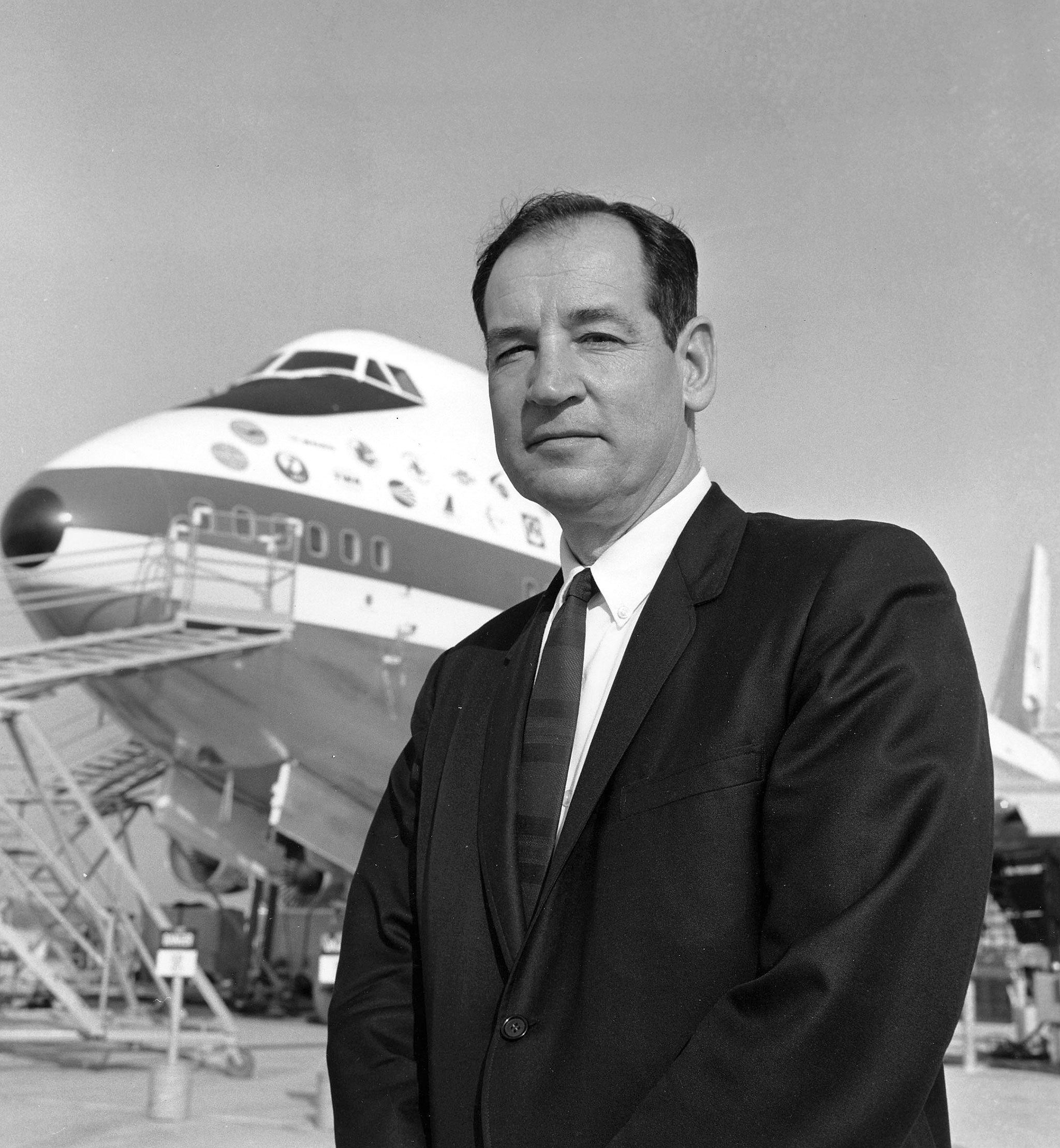EVERETT — Joe Sutter’s obituary is not finished.
Headlines around the world hailed the Boeing legend’s legacy when he died at 95 late last month. He was known as the “Father of the 747,” and was instrumental in designing the planes that have bookended the commercial jet market since the 1960s — Boeing’s 737 and 747. His career spanned more than 70 years, all at Boeing.
However, the soft-spoken engineer had reservations about the direction of the industry that he helped revolutionize. Today, the aerospace industry increasingly relies on globalization while jetliners are ever more complex machines.
In the mid-1960s, Boeing execs tapped Sutter to design a commercial jet two and a half times the size of the biggest passenger plane. And to do it in little more than two years. The company had already committed to delivering the first plane to Pan Am in late 1969. Given the Herculean task, Boeing workers on the 747 program during those early days came to be called “The Incredibles.”
“We were one team. We all knew what the job was,” Sutter said in an interview last November.
As head of 747 engineering, he led from the front.
“The most important thing is if it’s your program, you’re the head of it, you establish a leadership position, people know that you are in charge,” he said.
When a tough decision had to be made, he said, “I’d get the seven or eight or 10 people that were involved in that decision into an office.” The options were defined, and everyone would lay out the pros and cons.
“And after I listened to all of it, then I made a decision” that was clear, Sutter said.
Given the 747’s fast pace, he couldn’t have people “walking out of a conference wondering, ‘What the hell did the guy want to do?’ You had to give them pretty firm directions,” he said. “That doesn’t mean that if I was going to make a wrong decision, they couldn’t come and ask for a review of the decision.”
When Boeing leaders considered putting 747 production outside Washington, “I told them it would be a big disaster,” given the accelerated development schedule, he said.
“The quickest and easiest way to get a program done is to have everybody together,” he said.
Major aerospace companies today often stretch programs across time zones and international borders. For example, Boeing spread 777x design work among company engineering offices around the U.S. and even overseas. And Airbus assembles A320s in France, Germany, China and the U.S.
Breaking work across locations can be efficient and give companies flexibility, among other benefits.
However, it can create problems, too, Sutter said. “When you’re spreading your work all over the world, you have language problems and more things to try and control. So, it’s a harder job, it’s a tougher job.”
Boeing learned that lesson when it aggressively outsourced much of its 787 program. It had to take over design and production work done by suppliers and program partners.
Sutter marveled at the Dreamliner’s technological advances, but he also cautioned against overestimating the benefits of new digital tools. Designing a good airplane still requires good engineers.
“Computers help you get more precise answers,” but you have to ask the right questions, he said.
New technology is beneficial only if used prudently. “You’ve got to spend money on developing the technology, and you’ve got to understand how much of it you can use,” Sutter said.
When it comes to airplanes, that requires sitting down with airlines and other customers, and figuring out what they need, he said.
With the 747, “we knew we designed a good airplane because we listened to what the customer said they wanted,” he said in a 2014 interview with The Herald.
Sutter went to work for Boeing in the 1940s, and, until his death, he still had an office at the company’s Longacres complex in Renton. During his career, he saw huge advances and changes in aviation and airplane manufacturing. For him, there was one constant: Good people.
“That’s what sets Boeing apart,” he said.
Dan Catchpole: 425-339-3454; dcatchpole@heraldnet.com; Twitter: @dcatchpole.
Talk to us
> Give us your news tips.
> Send us a letter to the editor.
> More Herald contact information.

























